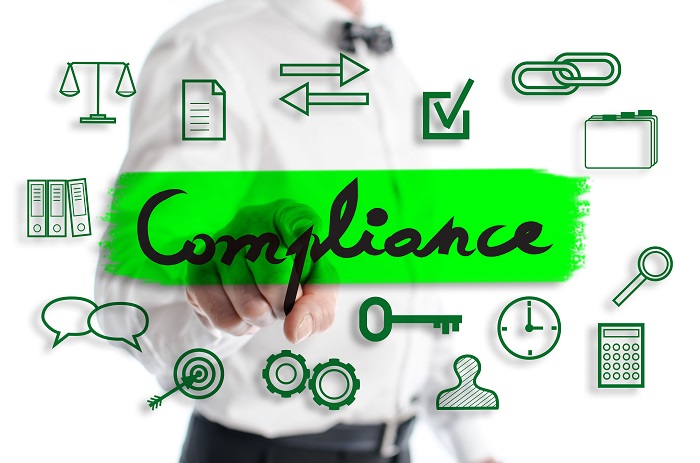
The Consumer Financial Protection Bureau has released its final rule for the Fair Debt Collection Practices Act. The release of the rule promises to bring substantial changes in consumer debt collection practices. Today’s release includes the rule and commentary for a total of 653 pages of text. The rule will be codified at 12 C.F.R. 1006 as Regulation F. The final rule, like the proposed rule, does not expand the scope of the persons or types of debt covered by the FDCPA.
The rule becomes effective one year after its date of publication in the Federal Register and it has not been published as of this writing. But that will occur soon so we can say that it will be sometime in November 2021.
There is much to discuss over the next months, but we can begin with 10 material changes from the proposed rule that deserve to be highlighted.
1. Changes in definitions.
- The definition of “communicate” under 1006.2(d) was substantially revised. The proposed rule provided: “[a] debt collector does not convey information regarding a debt directly or indirectly to any person if the debt collector provides only a limited-content message (“LCM”), as defined in paragraph (j) of this section.” This carve-out for LCMs has been deleted from the final rule and, in fact, the Official Interpretation includes LCMs as an example of what constitutes an “attempt to communicate.”
- “Consumer” as defined in 1006.2(e) was proposed to mean any natural person “living or deceased.” The final rule strikes the reference to “living or deceased” and adds “[t]he Bureau may further define this term by regulation to clarify its application when the consumer is deceased.”
- The proposed rule would define a “consumer financial product or service debt,” but this definition was removed from the final rule.
- Much has changed with the LCM as defined in 1006.2(j). The proposed rule defined it as a “message for a consumer.” The final rule defines it as a voicemail message for a consumer and materially revises the required and optional information needed for LCMs. The final rule now requires the LCM include the business name of the debt collector, but the business name cannot indicate the debt collector is “in the business of debt collection.” The proposed rule required the LCM to include the consumer’s name, and not only does the final rule strike the requirement, it does not permit its inclusion in the LCM “optional content.” The proposed rule would have allowed as optional content a “generic” statement that the LCM “relates to an account.” This is stricken from the final rule.
2. Changes to rules governing email and text communication.
The final rule significantly revises the proposed rule and imposes new requirements on the use of emails and text messages. The proposed rule allowed consumers to opt out of e-communications “in writing.” The “in writing” requirement is stricken from the final rule. However, the debt collector can establish “reasonable and simple” methods for consumers to opt out. The final rule also contains an “other law” exception and allows communication with a consumer who has opted out, but only if “otherwise required by applicable law.”
The employer-assigned email prohibition of section 1006.22(f)(3) has been modified. The proposed rule prohibited the use of such an email if the debt collector “knows or should know” it was issued by the employer. The final rule strikes “should know.”
3. Changes to frequency caps.
Final rule 1006.14 keeps contact frequency caps applicable only to telephone calls and in addition to providing a presumption of compliance is now revised to include a presumption of non-compliance if the frequency cap is exceeded. However, the exceptions to the call cap have been substantially revised from the proposed rule. The proposed rule provided that the following calls were excepted:
(i) Made to respond to a request for information from such person; or
(ii) Made with such person’s prior consent given directly to the debt collector.
The final rule combines these two subsections in a new (i) which provides calls are excepted from the cap if “[p]laced with such person’s prior consent given directly to the debt collector and within a period no longer than seven consecutive days after receiving the prior consent, with the date the debt collector receives prior consent counting as the first day of the seven-consecutive-day period.” The additional proposed exceptions, “Not connected to the dialed number; or placed to the persons described in § 1006.6(d)(1)(ii) through (vi),” remain substantially the same except they are renumbered as (ii) and (iii).
4. A new translated disclosures requirement.
The final rule introduces a new “Translated disclosures” requirement in 1006.18(e) pertaining to the disclosures required by 1692e(11). It requires the e(11) disclosures be given in the same language as the rest of the communication in which the disclosure is made and must be “complete and accurate.”
5. No safe harbor for meaningful attorney involvement.
The proposed rule provided conditions under which attorney debt collectors could demonstrate meaningful involvement in debt collection litigation. This safe harbor is not contained in the final rule.
6. The proposed rule on collection of time-barred debt (1006.26) does not appear in the final rule.
7. Proposed rule 1006.30(a) concerning furnishing information to credit reporting agencies prior to communicating with the consumer has been stricken.
8. Revisions to rules on sale, transfer or placement of debt.
The final rule does not contain proposed rule 1006.30(b)(1)(i)(C), which would have prohibited the sale, transfer, or placement of debt for which an identity theft report was filed. The final rule does contain an allowance for secured claims in bankruptcy, which was not in the proposed rule.
9. No validation rules, including the alternative electronic method for delivery of notices.
All the validation provisions of section 1006.34 of the proposed rule are omitted from the final rule. This section had proposed model forms for use in satisfying the validation notice requirements of 1692g of the FDCPA as well as rules concerning the electronic delivery of validation notices.
10. Material change to 1006.42 – “Providing required disclosures.”
Section 1006.42(b), “Requirements for certain disclosures provided electronically,” is substantially revised for the final rule. Unlike the proposed rule, the final rule expressly refers to 1692g(a) and appears to place restrictions on the delivery of the validation notice which do not now exist. This may be inadvertent due to the deletion of 1006.34 from the final rule. The major difference is the proposed rule referred only to validation notices made within five days of the initial communication, while the final rule references the entire 1692g(a).
The most innovative parts of the proposed rule were the limited content message and section 1006.34 validation. And both did not fare well. Key elements of the limited content message, provisions which would have made it a useful means of communication, were removed. And all of 1006.34 is deleted. And, while we see references to the use of email and electronic communications, what is there is neither innovative nor transformative. In fact, the final rule can be construed to impose new restrictions on electronic communications, and more risk.


